
A great storyteller. A person with childlike curiosity. A passionate advocate for electronic technology. A designer fuelled by both passion and reason. That’s me.

A great storyteller. A person with childlike curiosity. A passionate advocate for electronic technology. A designer fuelled by both passion and reason. That’s me.
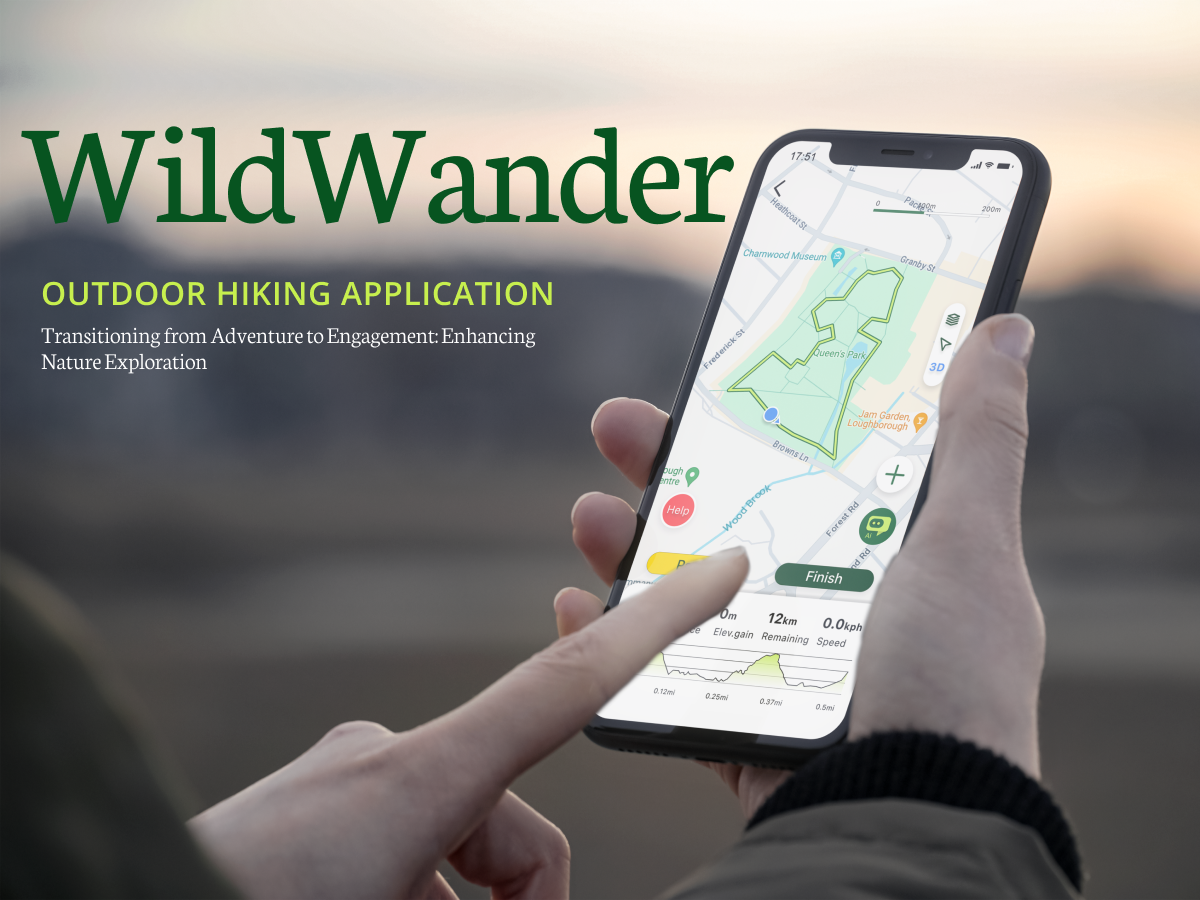
I believe we can design a solution to help hikers cope with the complexities and dangers of outdoor adventures. This solution would enhance the safety of hikers during their outdoor treks, improve their hiking experience, and increase the completion rate of hiking trails.
This would enable hikers to grow and gain a sense of accomplishment upon completing their routes, helping them to participate more confidently in hiking activities and strengthen their connection with nature.

WildWander – an outdoor hiking navigation app. WildWander enhances hikers’ experience and safety by offering features such as AR spatial comment, WildWander AI chatbots, hike route tracking, and a hiker assistance system.

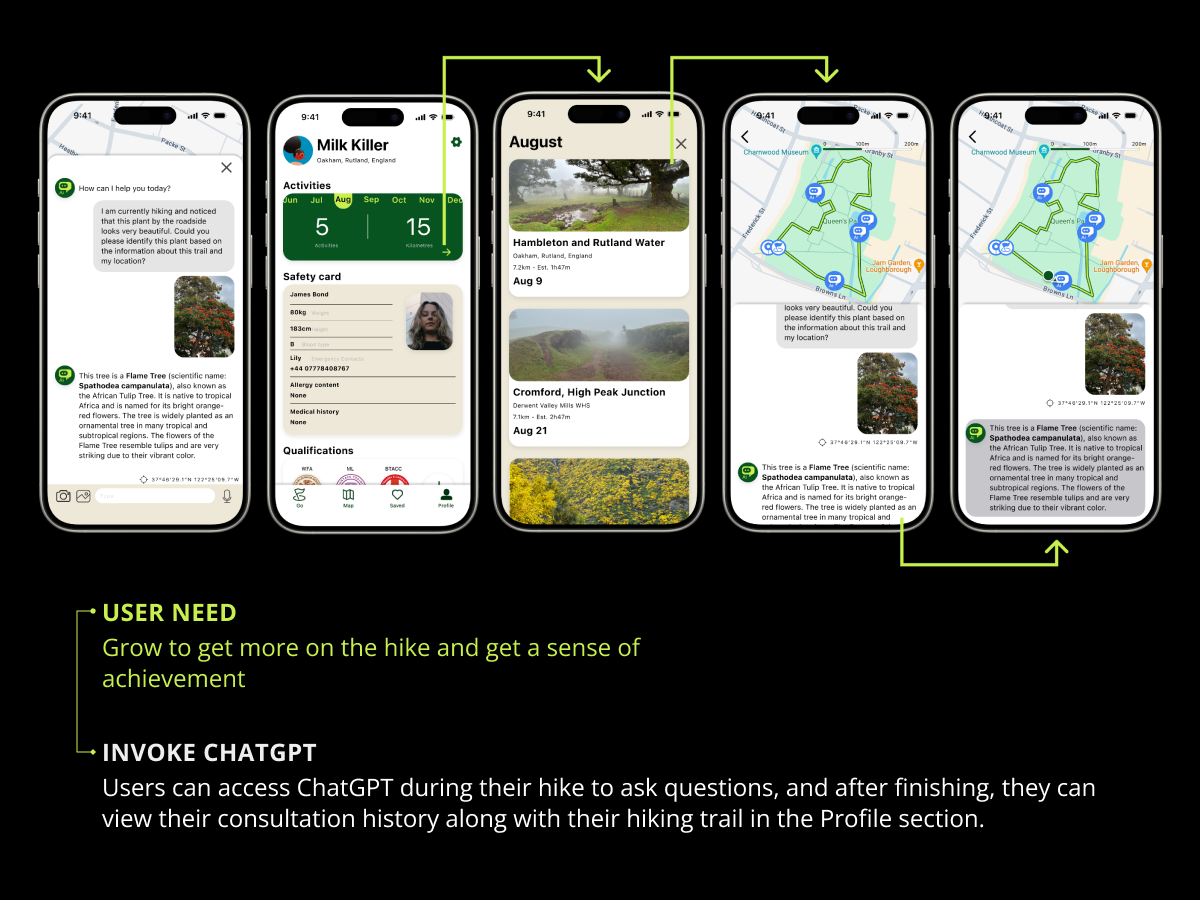
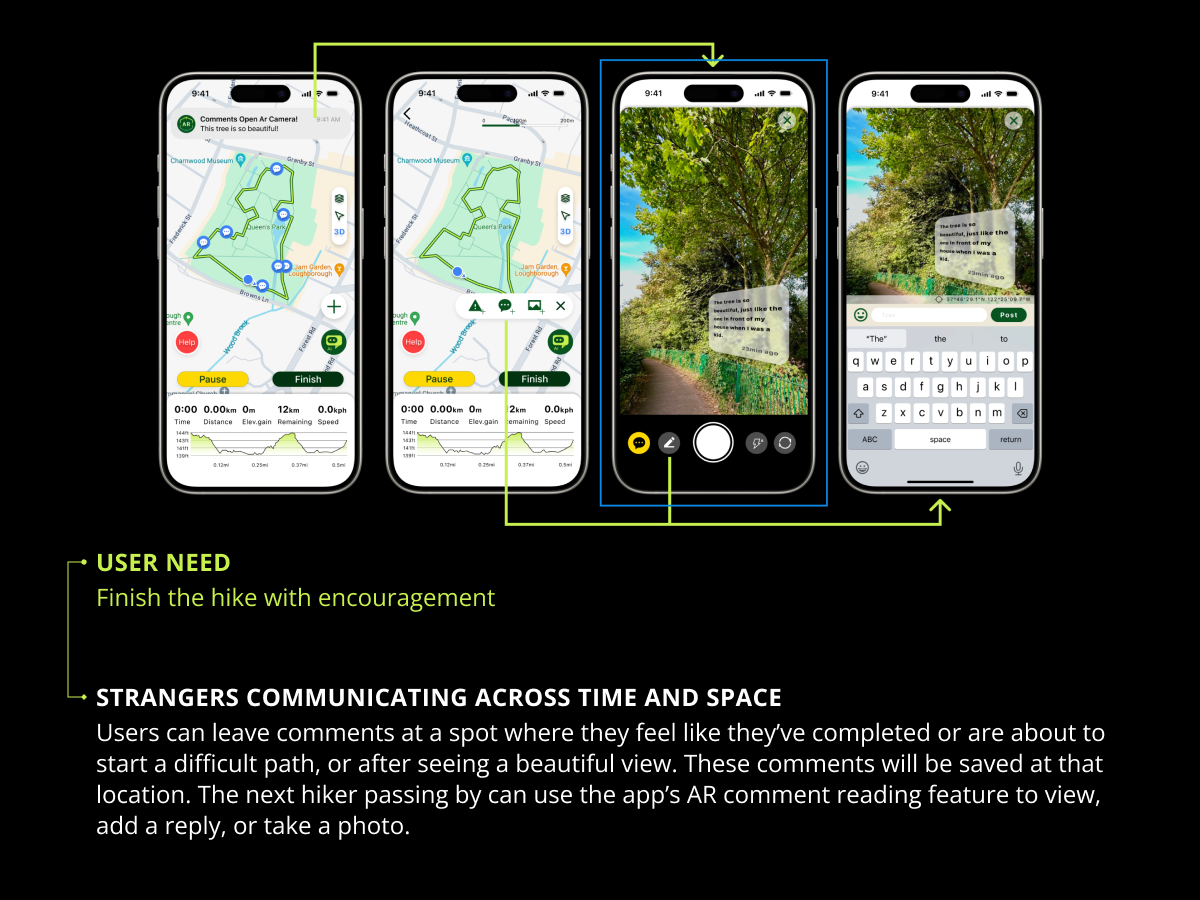

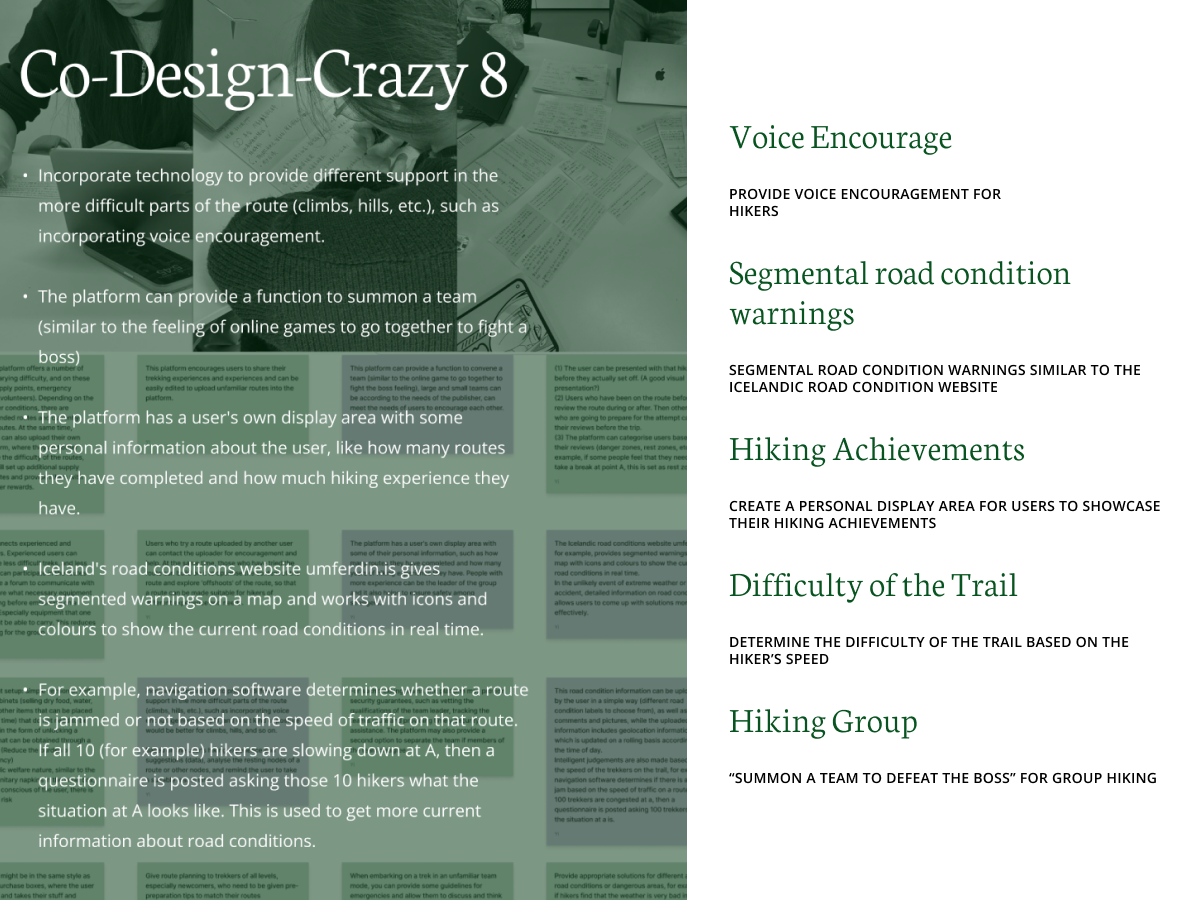
Based on the Vision Statement and initial insights, organize a co-design session and invite four designers to use the Crazy 8 method to brainstorm and generate ideas within a limited time.

Invite five participants to prioritize the existing features, focusing on the two modules identified in the initial phase: “Safety” and “Information Access.” Afterward, conduct one-on-one interviews to inquire about the reasons behind their prioritization.
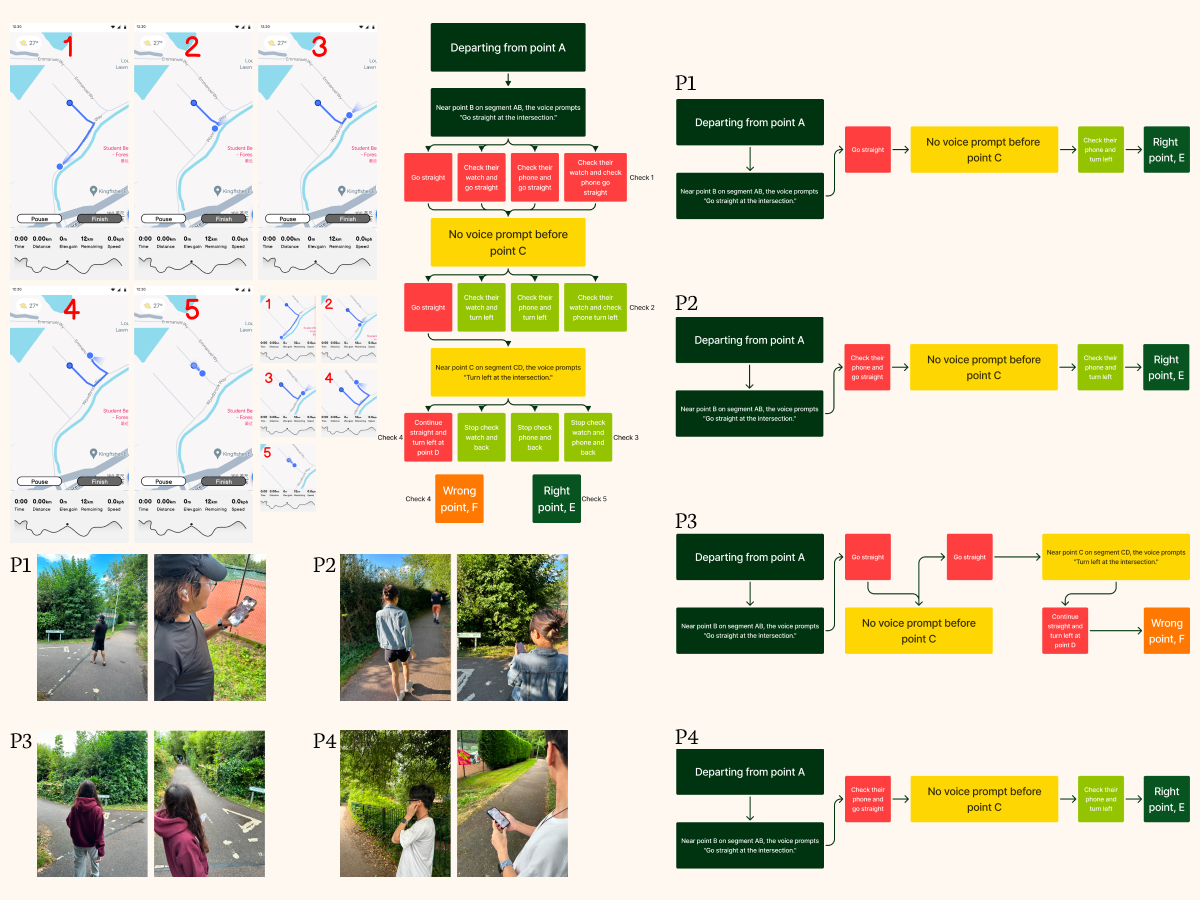
To investigate the effectiveness of voice navigation and smartwatch navigation during actual hiking scenarios, I designed an experiment for exploration. I selected a route that simulates conditions users might encounter during a hike and provided three navigation methods: smartphone navigation interface, voice navigation through headphones, and smartwatch navigation interface. The experiment will simulate delays in voice navigation during the hike, focusing on the decisions users make when approaching intersections after experiencing navigation delays.
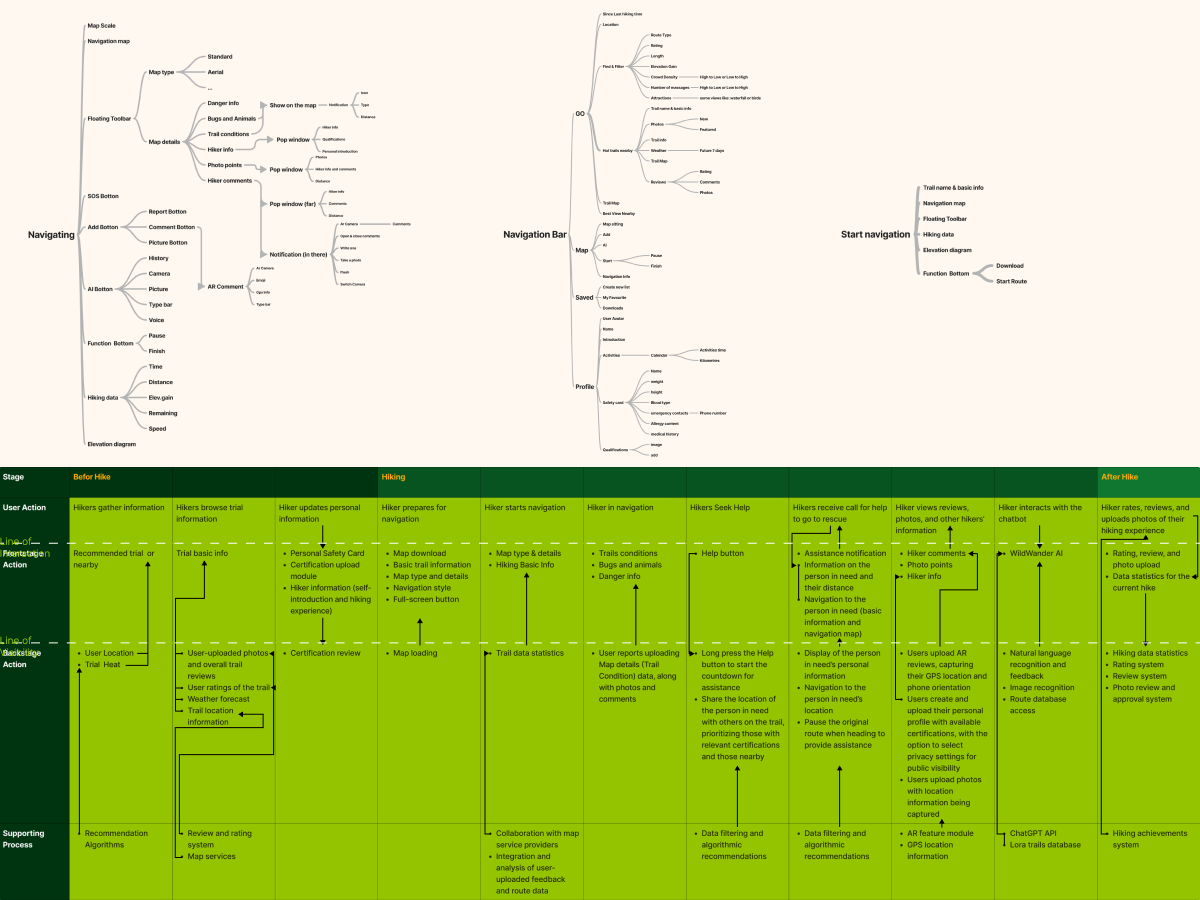
The main structure of WildWander is divided into four parts: GO, Map, Saved, and Profile. The service blueprint is categorized into three phases: pre-hiking, during hiking, and post-hiking.